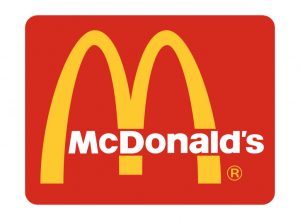If you a fan of McDonald’s, you’ll like its upcoming improvements.
But if you’re hoping its food also is part of that upgrade plan, you’ll be disappointed.
In a recent investor analyst call, the world’s largest burger chain announced it is spending $6 billion from now through 2020 to remodel many of its restaurants, add self-order kiosks and curbside pickup points. That’s $6 billion earmarked for window dressing, a reduction in human interaction and incentivizing customers to not leave their cars.
From a business perspective, this is good news.
- Remodeled stores—including exterior and interior improvements—move the comparable sales needle an average of 10-15 percent in the first three months after completion. Fact of life: Customers are drawn in by new and shiny things.
- Self-order kiosks also are proven means of reducing traffic jams at the counter and improving order accuracy.
- Curbside pickup is a great service that lowers transaction times and makes the buying experience entirely convenient.
Yet from a cultural perspective it raises some concerns:
- McDonald’s plans include nothing about making its food better tasting or more healthful or its ingredient sourcing more sustainable. The brand is and will remain one of the world’s largest cheap food delivery machines.
- How any customer sees a gussied-up restaurant and thinks, “Hey, there’s something exiting going on in there, let’s go!” is beyond me. It’s like a publisher changing the dust jacket on a mediocre book and seeing sales take off. It implies that people really don’t care about what they’re eating as long as the food is served within pleasant surroundings.
- I really like customer-facing kiosks where human input isn’t essential, such as in airports. But when it comes to the hospitality industry, I prefer humans. Machines may respond correctly to your touchscreen prompts, but you can’t have pleasant associations with them. Engaging with other humans is a key reason I eat out. McDonald’s and many other chains are eliminating human-to-human interaction through kiosks to improve inherently error-prone order processes. Kiosks also address the significant and ongoing labor shortage in foodservice. Machines that never go home, never call in sick, ask for health insurance or trade shifts to go on a date are more reliable “staffers.”
- Like drive-thru, curbside pickup ensures traditional McDonald’s customers never leave their cars. The industry calls these “line-busting” service tools, which, ironically, given what I mentioned about kiosks, requires an added layer of staffers moving food to idle customers. I love good service and I’ve enjoyed this feature at other restaurants … so maybe my opinion is mixed on this.
The easy summary is McDonald’s is spending an enormous load of cash to leverage its ability to compete on looks and improved service. Few restaurant chains understand their customers’ purchasing habits better than this one, so it’s a safe bet these will work.
But not with me. When I eat out, I like seeing people, other customers, servers or counter workers with whom I can have a brief conversation or at least exchange a smile. Restaurant food and people are, in my mind, inseparable.
And I’m not dragging my carcass to eat any place where the food isn’t as least as good or, ideally, better than the chow I prepare at home. Mediocre and massively processed food, no matter if served in a sexy or modern building, isn’t incentive enough to visit.
I suppose I’ll just have to learn secondhand how well these changes work.

Leave a Reply